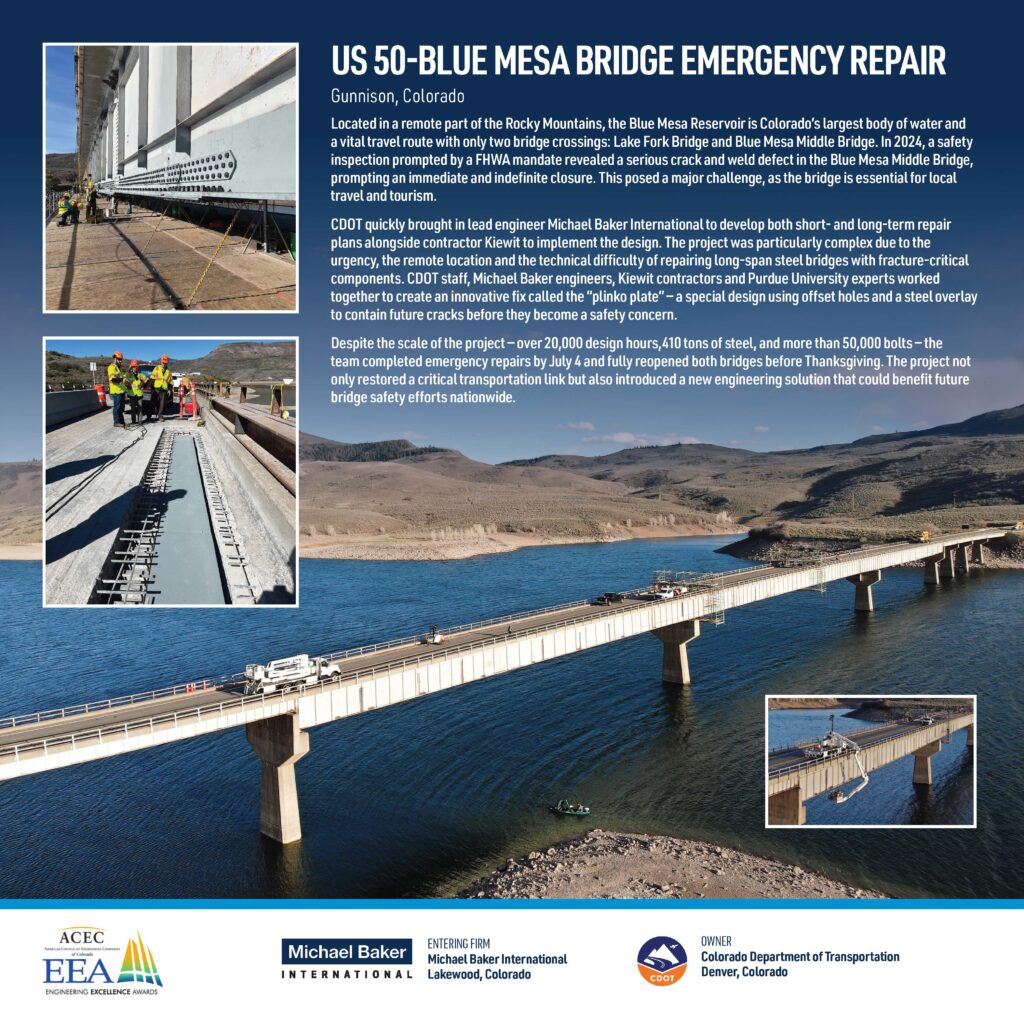Cradled by mesas and pinnacles within a high desert landscape, Blue Mesa Reservoir is the largest body of water in Colorado and the most popular and accessible of the three reservoirs in the Curecanti National Recreation Area. Located in a remote region of the Rocky Mountains, it lies approximately 3.5 to 4 hours from Colorado Springs or Denver. The Blue Mesa Reservoir has only two crossings: the K-07-A (Lake Fork Bridge) and K-07-B (Blue Mesa Middle Bridge), both long-span steel bridges carrying two lanes of US 50 traffic over the reservoir.
Safety concerns stemming from major bridge closures prompted the Federal Highway Administration (FHWA) to mandate non-destructive testing (NDT) of fracture critical members composed of AASHTO M244 Grade 100 Steel (T1 Steel), as outlined in a December 2021 memo. The Lake Fork Bridge and Blue Mesa Middle Bridge are two such bridges, each features three fracture-critical spans made up of two continuous welded steel plate girders.
In April 2024, inspectors completing the NDT discovered a 2.5-inch crack and a weld defect indication on the Blue Mesa Middle Bridge, along with internal flaws within the weld. The findings led the State Bridge Engineer and Colorado Department of Transportation (CDOT) Executive Management Team to order an immediate and indefinite full closure of the structure.
CDOT swiftly engaged Michael Baker International, authorizing the team to assess inspection reports, determine issue severity, model bridge capacity, and develop both interim and permanent repair strategies. Michael Baker’s civil design team also supported the preparation of gravel county roads to accommodate piloted detours. The project scope expanded to include inspection and permanent repairs for Lake Fork Bridge.
Overcoming significant technical challenges required close collaboration between Michael Baker, contractor Kiewit and experts from Purdue University. Together, the team pioneered an innovative solution to mitigate future cracking in web-to-flange welds. Dubbed the “plinko plate,” the approach involved a tightly spaced pattern of offset crack arrest holes and an overlying plate designed to contain potential cracks before they could pose safety risks.
Emergency repairs on the Blue Mesa Middle Bridge were completed by July 4. After more than 20,000 design hours, the installation of 410 tons of steel plate and over 50,000 bolts, permanent repairs were finalized on both bridges — allowing them to fully reopen ahead of Thanksgiving 2024.
